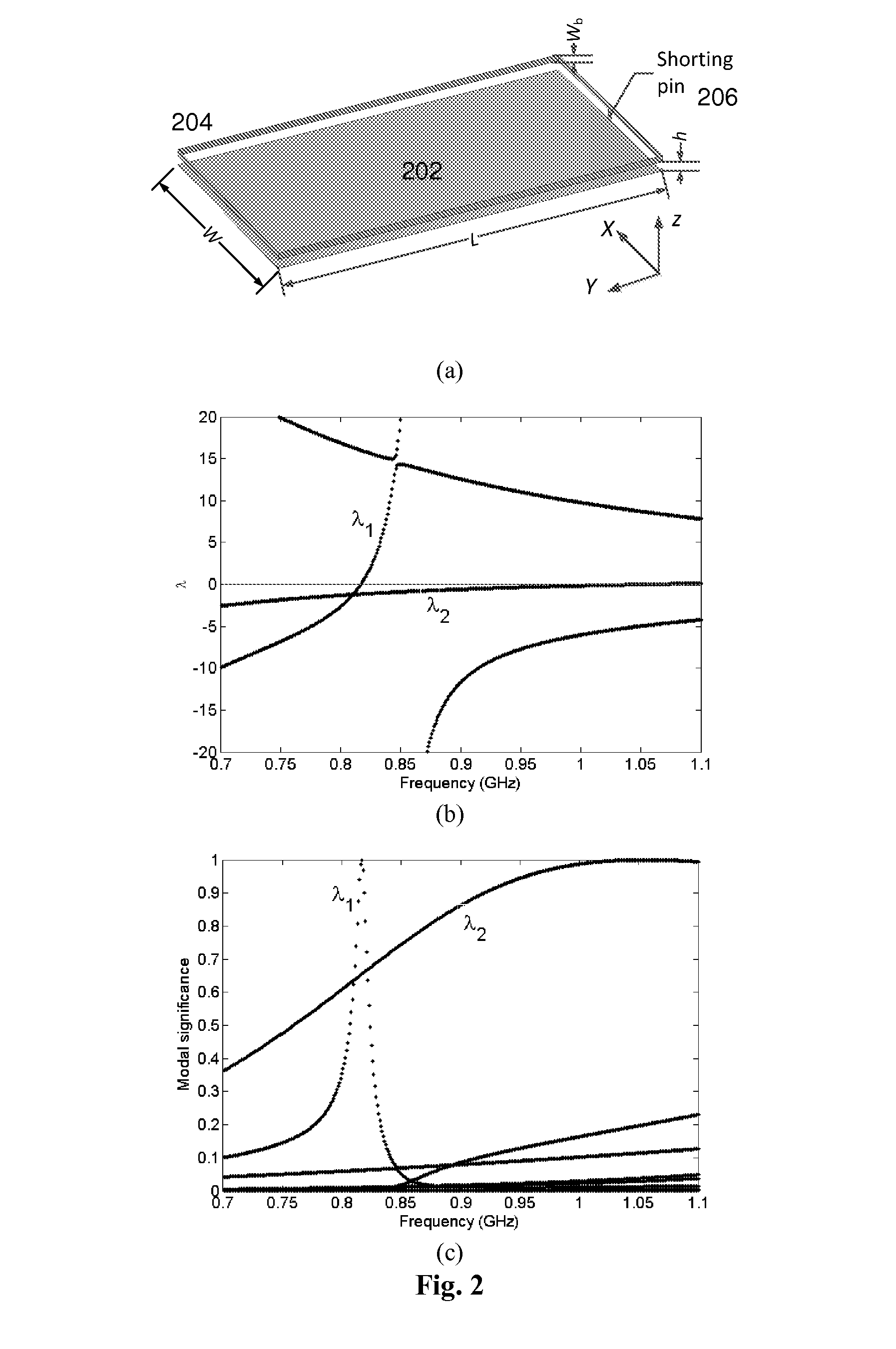Orthogonal multi-antennas for mobile handsets based on characteristic mode manipulation
a mobile handset and characteristic mode technology, applied in antenna details, antennas, electrical devices, etc., can solve the problems of complex integration of multiple antennas, degrade the mimo performance of terminals, correlation, diversity gain and capacity, etc., to achieve low mutual coupling, low correlation, and high total antenna efficiency
- Summary
- Abstract
- Description
- Claims
- Application Information
AI Technical Summary
Benefits of technology
Problems solved by technology
Method used
Image
Examples
Embodiment Construction
[0065]Embodiments of the present invention now may be described more fully hereinafter with reference to the accompanying drawings, in which some, but not all, embodiments of the invention are shown. Indeed, the invention may be embodied in many different forms and should not be construed as limited to the embodiments set forth herein; rather, these embodiments are provided so that this disclosure may satisfy applicable legal requirements. Like numbers refer to like elements throughout.
I. INTRODUCTION
[0066]Multi-antenna design in mobile handsets at frequency bands below 1 GHz is very challenging, since severe mutual coupling is induced by simultaneous excitation of the chassis' fundamental dipole mode by more than one antenna element. According to some embodiments of this invention, a novel multi-antenna design approach is proposed to obtain uncorrelated antennas. By manipulating the chassis structure, more than one characteristic mode is enabled to resonate at frequency below 1 GHz...
PUM
 Login to View More
Login to View More Abstract
Description
Claims
Application Information
 Login to View More
Login to View More - R&D
- Intellectual Property
- Life Sciences
- Materials
- Tech Scout
- Unparalleled Data Quality
- Higher Quality Content
- 60% Fewer Hallucinations
Browse by: Latest US Patents, China's latest patents, Technical Efficacy Thesaurus, Application Domain, Technology Topic, Popular Technical Reports.
© 2025 PatSnap. All rights reserved.Legal|Privacy policy|Modern Slavery Act Transparency Statement|Sitemap|About US| Contact US: help@patsnap.com



